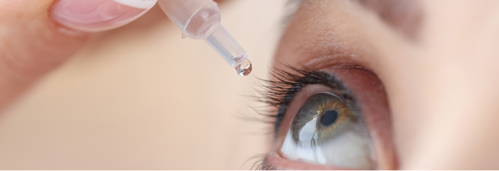Increased Mask Use May Aggravate Dry Eye Symptoms
Healthcare workers show high symptom scores

Dermot McGrath
Published: Thursday, June 1, 2023
Dermot McGrath reports
The increased use of face masks in the wake of the COVID-19 pandemic led to a marked increase in dry eye symptoms and signs, Portuguese researchers report.
“Ophthalmologists should advise their patients of the potential ocular surface health risks related to face masks,” said Dr Ana Pereira. “And fitting strategies should be adopted to try to minimise the discomfort and lessen any symptoms that may result.”
Explaining the rationale for her study, Dr Pereira noted emerging research suggests the widespread use of face masks led to an increase in the prevalence of ocular symptoms during the COVID-19 pandemic. With face mask use, the upward flow of air during expiration or the limited movement of the lower eyelid has been shown in some studies to promote faster tear evaporation, which may aggravate dry eye symptoms.
Dr Pereira’s study included 40 eyes of 20 health professionals with a mean age of 47 years. An Ocular Surface Disease Index (OSDI) questionnaire assessed dry eye disease (DED) symptoms. In each answer, the participants were asked to self-report the symptoms pre- and post-COVID-19 when face mask use became generalised.
In addition, all volunteers underwent a non-invasive ocular surface workup by means of TearCheck® (ESW Vision) on the same day at two different times: firstly, at the beginning of the work shift before wearing a face mask and then after six hours of continuous face mask use. The system calculated eye redness score (range 1–4), non-invasive breakup time (NIBUT), tear meniscus thickness, and tear film stability evaluation (TFSE) variation between the two measurements.
The results showed a mean increase in the OSDI score of 15.33 when comparing pre- and post-COVID-19 periods. The eye redness score also showed a statistically significant increase of 0.75 after six hours of continuous face mask use. The tear meniscus thickness score decreased 0.04 mm between the two evaluations, and the non-invasive breakup time test also showed a reduction of 2.20 between the assessments. Although the tear film stability evaluation did not show a statistically significant difference, the values were higher for the second evaluation, indicating greater instability, Dr Pereira noted.
Putting the results into context, Dr Pereira said the mean increase of more than 15 points in the OSDI scores seems to confirm the initial reports of mask-associated dry eye (MADE).
“When evaluating non-invasive ocular surface parameters, a six-hour period of face mask use worsened all the measured variables, including ocular redness score, tear minus thickness, non-invasive breakup time, and tear film stability,” she said.
She added the study has some limitations, including a small sample size.
“In addition, we know that perhaps some other assessments could have been carried out, such as tear osmolarity measurements,” she noted. “We also could not examine the impact of taping the upper mask edge, nor did we account for diurnal variation of tear meniscus volume.”
Dr Pereira gave this presentation at the 27th ESCRS Winter Meeting in Vilamoura, Portugal.
Ana Pereira MD is an ophthalmologist at the São João University Hospital, Porto, Portugal. u016823@chsj.min-saude.pt
